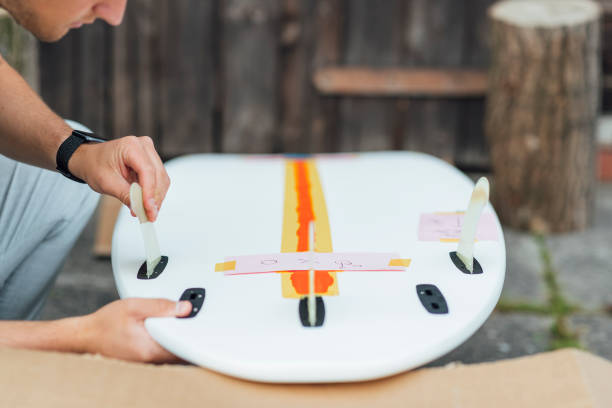How to Make a Fatum Surfboard – Part Three – Shaping
This is the third part of our ‘How a Fatum Surfboard is Made series’ for those who have been away from Earth for the last few months. This episode looks at the shaping machine and the shaping bay.
In part one, we discussed the blank. How we select the blanks for your surfboard, why we choose them, and most importantly, what makes these steps crucial for making a great surfboard.
In part two, we discussed what Gero believes is the most crucial step in the process: ‘The Conversation’ between you and Gero and how he gets the information he needs from you to create the best Fatum surfboard.
This is my favorite part so far.
We want to clarify a few things before we begin. Shapers are only one part of the process. Shape a good surfboard, but you must be able to glass and polish the board to the same level of excellence.
Overview – Gero shapes and finishes all boards by hand at Fatum. The panels are then sent to Formiga or Saqua, who will fiberglass and polish them. All the work is done in-house, and all three men are excellent. They can do each other’s jobs and have a good relationship.
The Shaping Machine In the first 20 years, Gero hand-shaped all Fatum boards from start to finish. They would then polish and glass them. But times have changed, and Gero needed a way to replicate exact “starting points” for specific models. To be more precise.
Gero took a major decision in 2006 that would prove to be the most significant of his career. Miki Langenbach, a friend of his, sold him the APS 3000 shaping machine. The transition from 100% hand-made to the APS 3000 took two years. Since then, the device has undergone several upgrades both in hardware and software. This results in a very intuitive and smooth operation.
The Process Gero keeps all his files, variations, and custom shapes for clients. From here, he uses the information he gathered from “The Conversation” to make adjustments and tweaks to his primary model. He was customizing the board to suit you.
He checks your 3D rendering for imperfections with an eye trained to perfection. He inserts the chosen bank and cuts the board as close to the surface as possible. The most substantial part of the surfboard blank is located here. This will significantly improve strength and durability.
Gero will monitor the entire process to check for any irregularities. He will hover his hand over the stop button just to be sure.
The surfboard will then look like this.
Next, using the pre-shaped blank, Gero will use manual tools to refine the rails, nose, and deck.
In conclusion, and as a way to conclude this part of the process of board building that I find appropriate, I’d like to share with you a revelation. Before I took the time to learn machine shaping, I thought it needed improvement. Hand-shaping is pure, and machines are the newer, automated alternative. I want to change that and give you my updated, fresh mindset.
Handshaking is the essence, the feeling. You can only connect with foam if you work it from beginning to end. It’s a given.
You can’t…
It is important to note that machine shaping is a different process. During handshaking, you use other machines; planers, files, saws, etc. These are simple machines that you can hold in your hand. The shaping machine is a natural extension. This is a very complicated, inconsistent, and highly specialized machine. You need to have fundamental skills and time to use it effectively. Before reaching this level, you must also know how to shape.
You are the translator as the machine operator. As the shaper, you must translate and interact with the machine in a language it can understand. You must be able to look at 3D renderings and identify potential issues with creating the physical product.
What are the benefits of using this machine? Precision is the short answer. You can be sure you can recreate something extraordinary, which is difficult with manual tools.
In conclusion, I’ll leave you with the following.
Gero has thought about using a manual set of tools to shape a board from beginning to end, but he admits, “That is as far as I can go …”
